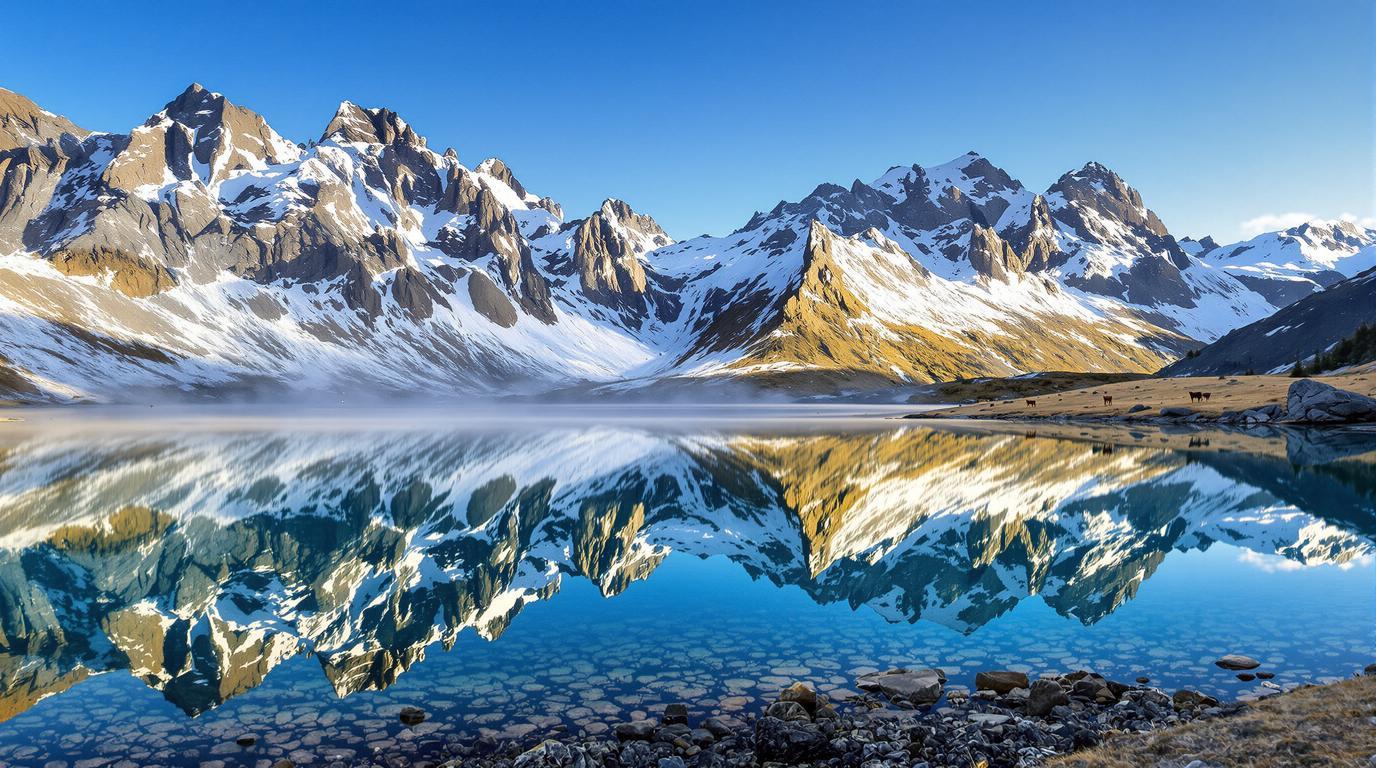The morning light skims across Lac du Crozet like liquid gold, creating dancing diamonds on water that seems impossibly blue against the rugged alpine backdrop. I’ve hiked to countless mountain lakes across four continents, but there’s something about this hidden jewel in France’s Belledonne massif that stops me in my tracks – perhaps it’s the perfect reflection of craggy peaks or the absolute silence broken only by the whistle of an occasional marmot.
Where wilderness and history collide in the French Alps
Perched at 1,974 meters above sea level, Lac du Crozet occupies a privileged position within one of France’s most underrated mountain ranges. While the Mont Blanc massif draws crowds by the thousands, Belledonne remains a sanctuary for those seeking authentic alpine experiences without the tour buses and selfie sticks.
What makes this crystalline pool particularly fascinating is its dual identity as both natural wonder and human achievement. In the late 19th century, pioneering hydraulic engineer Aristide Bergès used these waters to conduct experiments that would revolutionize hydroelectric power – earning him the nickname “the father of white coal.”
“We still feel Bergès’ spirit here,” explains Maurice, a weather-beaten mountain guide I meet at the lake’s edge. “He saw not just beauty but potential in these waters – much like visitors today who come seeking something beyond postcard views.”
Three secret experiences beyond the standard lake visit
A hidden ridge trail where ibex roam freely
While most hikers follow the well-trodden path from Pré Raymond to the lake and back, I discover an unmarked trail branching northeast from the lake’s far shore. This narrow path climbs steeply for about 45 minutes before opening onto a dramatic ridge where Ibex graze with surprising nonchalance. From this vantage point, both Lac du Crozet and neighboring Lac du Loup appear as twin sapphires nestled in stone.
Time your visit for late September when the surrounding blueberry bushes turn a brilliant crimson, creating an otherworldly landscape that few tourists ever witness.
The forgotten shepherd’s refuge with the best sunset view
Tucked behind a cluster of boulders on the northwestern approach sits a small, partially restored stone shelter that once housed shepherds tending summer flocks. Local hikers call it “La Cabane Oubliée” – the forgotten cabin – though you won’t find it on any map.
I stumble upon it following a faint trail of cairns and decide to linger as afternoon fades. The cabin’s low doorway frames a perfect panorama of the sun setting behind distant peaks, painting the lake in impossible shades of amber and violet. Bring a small camping stove for tea and you’ll experience mountain magic in its purest form.
Alpine flavors that connect generations of mountaineers
The true culinary revelation comes not at the lake itself but in the tiny hamlet of La Combe-de-Lancey on the descent. Here, at an unassuming farmhouse with a hand-painted “Fromage” sign, Madame Bouvier continues her family’s 150-year tradition of producing tomme de Belledonne cheese.
The aging room holds wheels of cheese that smell of wild herbs and fresh grass, each developing complex flavors that reflect the precise alpine meadows where her cows grazed. Paired with a chunk of dense mountain bread and a slice of saucisson, it becomes a transcendent post-hike meal that connects you directly to this landscape.
Essential insider tips for an authentic experience
Timing your visit for solitude
Avoid July and August when French families descend en masse. Instead, visit mid-September through early October when the crowds thin dramatically but before the first snows make access challenging. Weekday mornings offer the best chance of having the lake entirely to yourself.
The smarter approach route
While most hikers start from the popular Pré Raymond parking area (often full by 9am), begin instead from the 4 Chemins trailhead. This alternative route is slightly longer but rewards with denser forest, three charming wooden bridges, and a waterfall viewpoint that the standard path misses entirely. Plus, you’ll find parking even on busy days.
Where wilderness reminds us what matters
As dusk approaches and most day-hikers have descended, I find myself alone at the lake’s edge, watching alpine swifts dive for insects across the darkening water. In these moments, places like hidden French cascades and spectacular limestone canyons remind us of nature’s perfect designs.
Unlike medieval villages clinging to dramatic cliffs elsewhere in France, Lac du Crozet offers no architectural wonders – just the profound simplicity of water, stone, and sky arranged in perfect harmony. And sometimes, that’s exactly the discovery our complicated lives need most.
